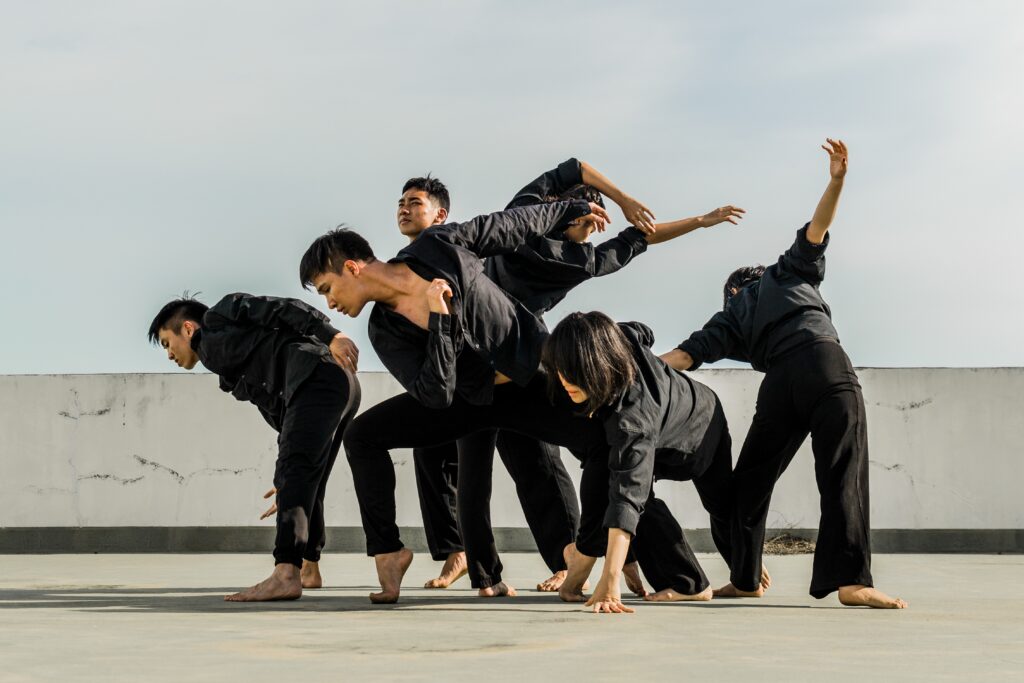A lot of dance shows I have seen as a viewer or dancer live and on TV shows the biggest concern I see is lack of synchronisation between the dancers. The ensemble and group dynamics seen were missing. A group dance not only consists of doing the dance steps at the same time but also includes coordination of energy levels and conviction.
I know that every individual dancer has their own style and uniqueness. But, it is important to understand that an imbalance in energy level and focus may ruin the entire performance.
So, in this blog let us first understand the art of Ensemble and group dynamics which needs to be implemented by every choreographer as well as dancer.
What is Ensemble?
First before understanding the issue of incoordination let us first dive into some theory.
What is Ensemble? An ensemble is nothing but a group of people working together to achieve one goal. It can be a group of musicians, actors, singers, or even dancers.
Let us consider one film, where a number of actors, writers, technicians, cameramen, crew, and employees work together on a single project with coordination. They are performing their assigned tasks, but the end product is the film.

The same goes for dance, every dancer or performer is assigned his/her own task and uses their assigned power. Proper coordination of movements, with appropriate timing as well as energy results in a successful performance.
Why does ensemble or group dynamics fail?
There is a term known as Ensemble ethic. It states, “Working for the good of the group rather than for the individual”. This means that the dancer should understand that you are working in the group as a whole and not as an individual.
When you dance solo, the dancer has the liberty to adjust their energy levels, timing as per their need. But as a group, the dancer contributes as a part of the performance. Sadly, most of the dancers are aware of this.
Secondly, it is the choreographer’s skill to understand that while crafting the dance movements, He or she should know every dancer’s capability.
And lastly, understanding the performance-related aspects like the stage, lighting, entry, and exit wings.
Group dynamics
To improve coordination and accomplish a masterpiece, A choreographer as well as a dancer must understand a few steps. Group dynamics is one theory out of the ocean of concepts in theatre and dance.
Group dynamics is a concept where a group of people behave and interact with each other to form a group. If groups are managed properly, they can contribute to a meet a successful goal.
But, you must be thinking that why m am I talking about organizational behavior topics in a dance niche blog? Because a troupe of dancers also works together as an organization. If we implement these group dynamic concepts into our performance as a dance director and dancer, our performance will reach the top-notch.
If you want me to write a separate blog dedicated to group dynamics, Leave a comment below.

Tuckman’s Stages of group development
Another concept in group dynamics is Tuckman’s stages of group development.
There are four stages while you work together as a team.
Those four stages are:
Forming: In this stage, the team members come together to address the problem project.
Storming: Here, the team leader appoints different roles to the team members. Here, the team may experience negative aspects of behavior which result in conflicts. However, it is important to clearly understand the minds of team members rather than destroy the project during the final stage.
Norming: In this stage, the members, work together with energy levels and understand their role.
Performing: Now it is the time to excel. The team is ready to give the final output and where the contribution of each and every team member is reflected in their hard work along with team spirit.
Now, once you scan through the above stages, you have found clearly relatable to our group and troupe dynamics.


0 Comments